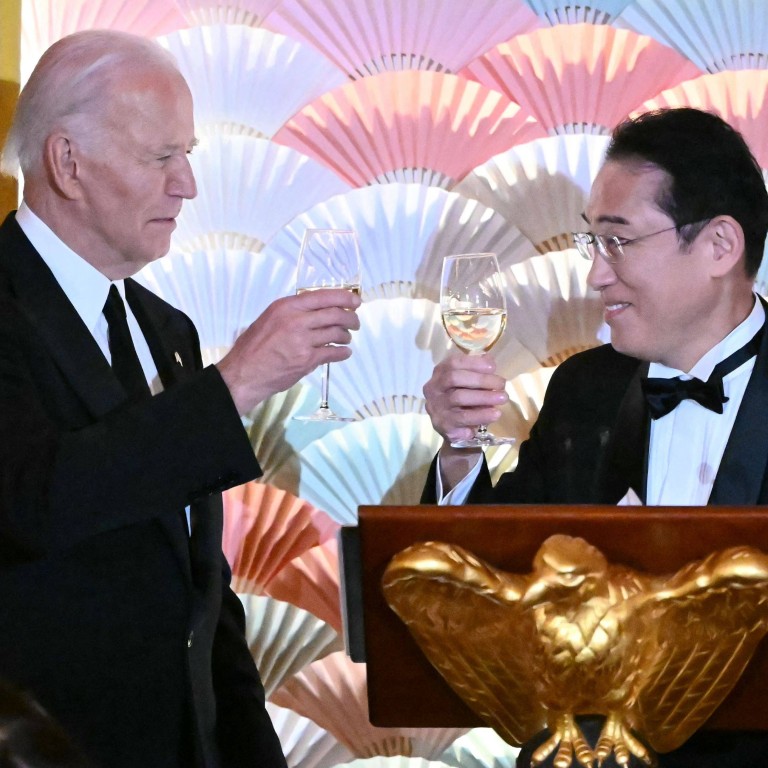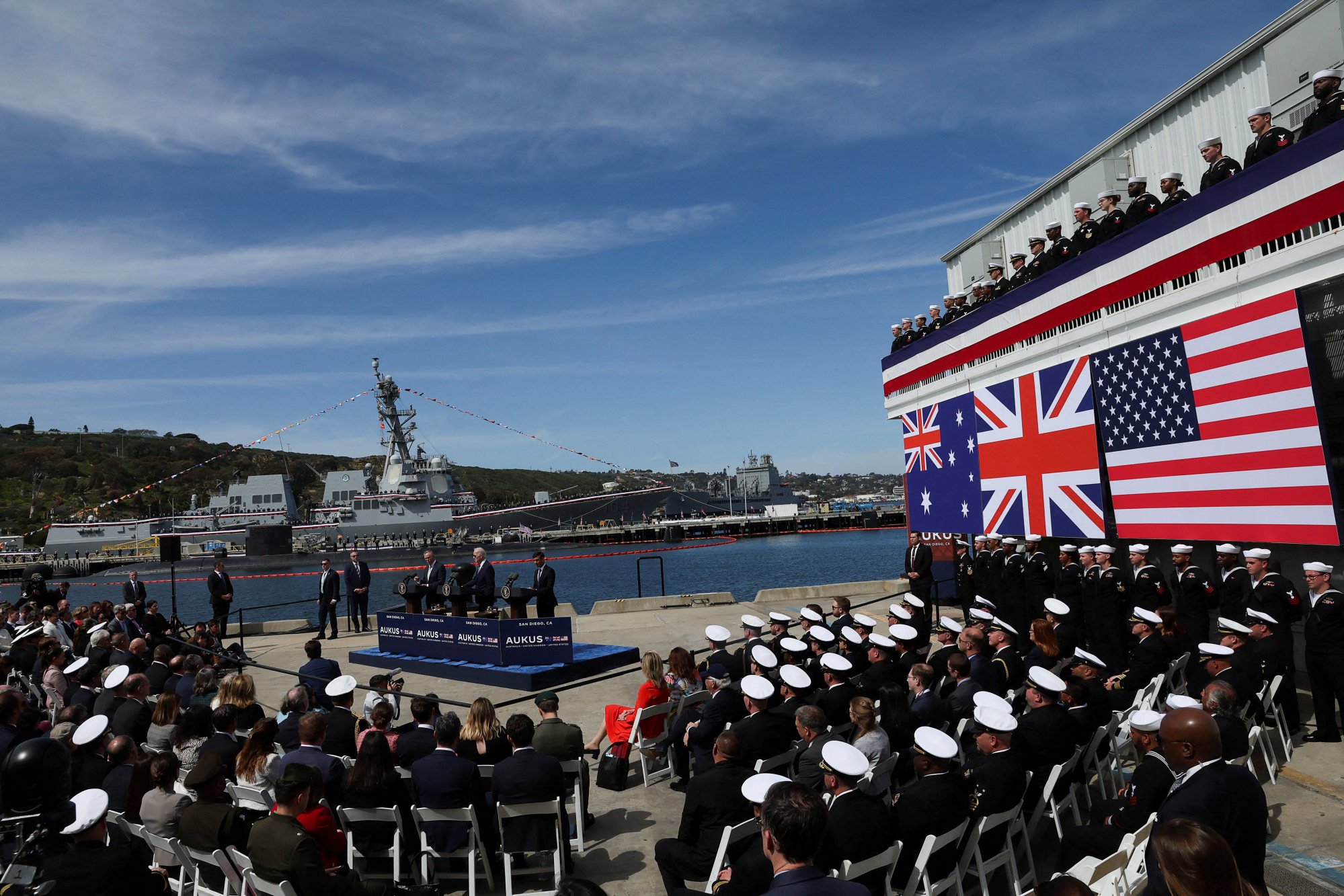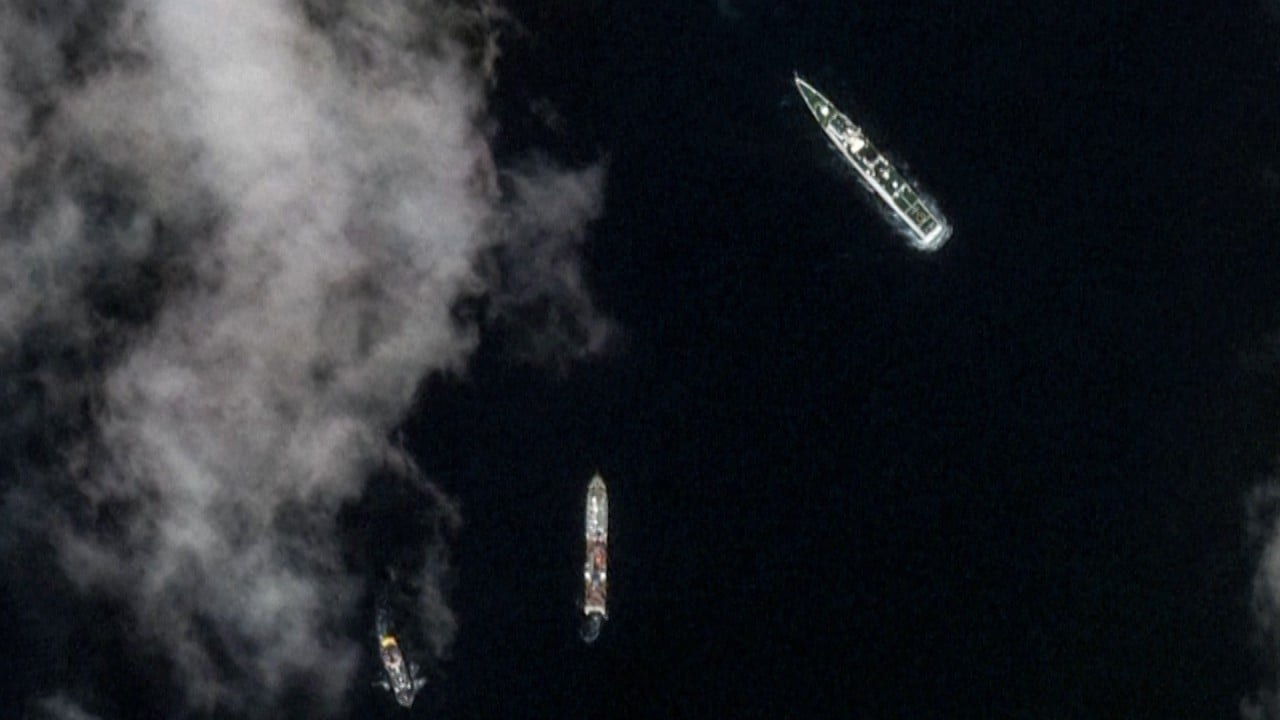
Not an ‘Asian Nato’: Aukus still work-in-progress but expansion could complicate China’s regional plans, analysts say
- Buildout of Indo-Pacific cooperation pact could leave China more isolated facing more complex network of potential adversaries
- But it is premature to add more member states to ‘new group’ that has barely started, analyst says
“Our Aukus defence partnership with Australia and the United Kingdom is exploring how Japan can join our work in the second pillar, which focuses on advanced capabilities, including AI, autonomous systems,” Biden said during a joint press conference with Kishida on Wednesday.
Launched in 2021, the Aukus pact has two key pillars: Pillar I is to support Australia’s acquisition of conventionally armed nuclear-powered submarines; Pillar II focuses on cutting-edge technologies, including quantum computing, artificial intelligence, and hypersonics.
Why the downfall of Aukus could be a ‘Mother, may I?’ attitude from US
“Aukus partners have developed principles and models for additional partner engagement in individual Pillar II projects and will undertake consultations in 2024 with prospective partners regarding areas where they can contribute to, and benefit from, this historic work,” the defence ministers said in the statement.
“The signalling has been an important part showing that Pillar II of Aukus, the one that focuses on emerging technologies may be more inclusive to like-minded and similarly developed allies of the current Aukus members,” said Stephen Nagy, an international relations professor at International Christian University in Tokyo.

According to Yonhap News Agency, Washington is considering adding South Korea, Canada and New Zealand as potential partners for cooperation on advanced capability projects in their Aukus security partnership, citing an anonymous senior US National Security Council official.
The consultation process will take some months, the official added.
“Japan and [South Korea] have become more concerned about Chinese behaviour in recent years and this explains their interest in cooperating more closely with Aukus.”
‘No plans’: Australia denies Japan poised to formally join Aukus pact
Collin Koh, a senior fellow at the S. Rajaratnam School of International Studies in Singapore, said the four countries in discussion to join Aukus Pillar II “all have something to contribute”, including hypersonic missile programmes, cybersecurity and unstaffed systems.
“At least for Japan, and for South Korea, for example, when it comes to hypersonic capabilities, these two countries already have existing hypersonic research programmes,” Koh said.
Benjamin Barton, associate professor at the University of Nottingham’s Malaysia campus, said the expansion of Aukus could shore up ties between the Indo-Pacific states, with security alliance treaties or an intelligence sharing network with the US, continuing to balance against China.
“Most of these states have well established and/or budding arms industries and strong budgetary commitments to maintain military spending at the same rate as the US … bringing these countries on board could significantly boost Aukus’ credibility as an ad hoc security arrangement for the region as a whole,” Barton said.
“The aim is to consolidate these ties, from a security perspective, to ensure that China’s rise is kept in check in the region.”
But Barton argued that Aukus still needs to sort out its positioning.
“Aukus will struggle to shed its image as an Anglo-Saxon club even if it may harbour designs to develop security structures for a much broader region,” he said.
“Aukus will also need to clarify its end-goal – is it simply a vehicle to facilitate military cooperation and operationalisation for a close-knit group of states, or does it harbour much deeper ambitions?”
Heath, from the Rand Corporation, said while the most valuable cooperation in the Aukus expansion would be in defence technology ties, it is unlikely to develop into an Indo-Pacific security alliance in the near term.
“The level of military cooperation should not be exaggerated. This is not an ‘Asian Nato’ with interoperable forces and obligations to fight for each other”, Heath said.
“Moreover, Aukus is a new group that is still trying to deliver practical benefits. It is premature to expand the group given it has barely started.”
Barton added that the possibility of Chinese military action across the Taiwan Strait had driven Washington to create a diplomatic and security front with the capacity to intervene alongside the US in the event of a military conflict between Beijing and Taipei.
The statement said the three countries expressed serious concerns about China’s “dangerous and aggressive behaviour” in the South China Sea, which involved militarising reclaimed features and using coastguard and maritime militia vessels.
Barton said the Chinese military would continue its military development and activities in the South China Sea, regardless of Aukus expansion.
However, expansion of Aukus could help isolate China in the regional security architecture, especially in the case of any contingencies.
“This would incur regional opprobrium and could damage [Beijing’s] carefully-managed reputation,” Barton said.
“If done properly, [Aukus] could provide a blueprint for an inclusive redesign of the Indo-Pacific’s security architecture, which would leave China with little choice but to either acquiesce or run the risk of being perennially faulted for any long-term systemic instability across the region.”
How should Australia use Aukus submarines? Up to them, says US Pacific commander
“At the very least, it will create greater uncertainty in the minds of the key [Communist Party] leadership, which is the basis for deterrence,” said Malcolm Davis, a senior analyst at the Australian Strategic Policy Institute.
“The goal here is to share technologies to better respond to China’s rapid military expansion and modernisation, and in doing so, make the potential cost of using force to achieve policy objectives greater – and thus deter such use.”
Koh said expansion of Aukus could improve the member states’ military interoperability and defence industrial collaboration.
“It is no longer just the US deterring China per se, but in line with the integrated deterrence strategy that is espoused by the Biden administration,” Koh said.
“So I think China has to take into consideration that it is a much more complicated network of potential adversaries that you have to deal with going forward.”


